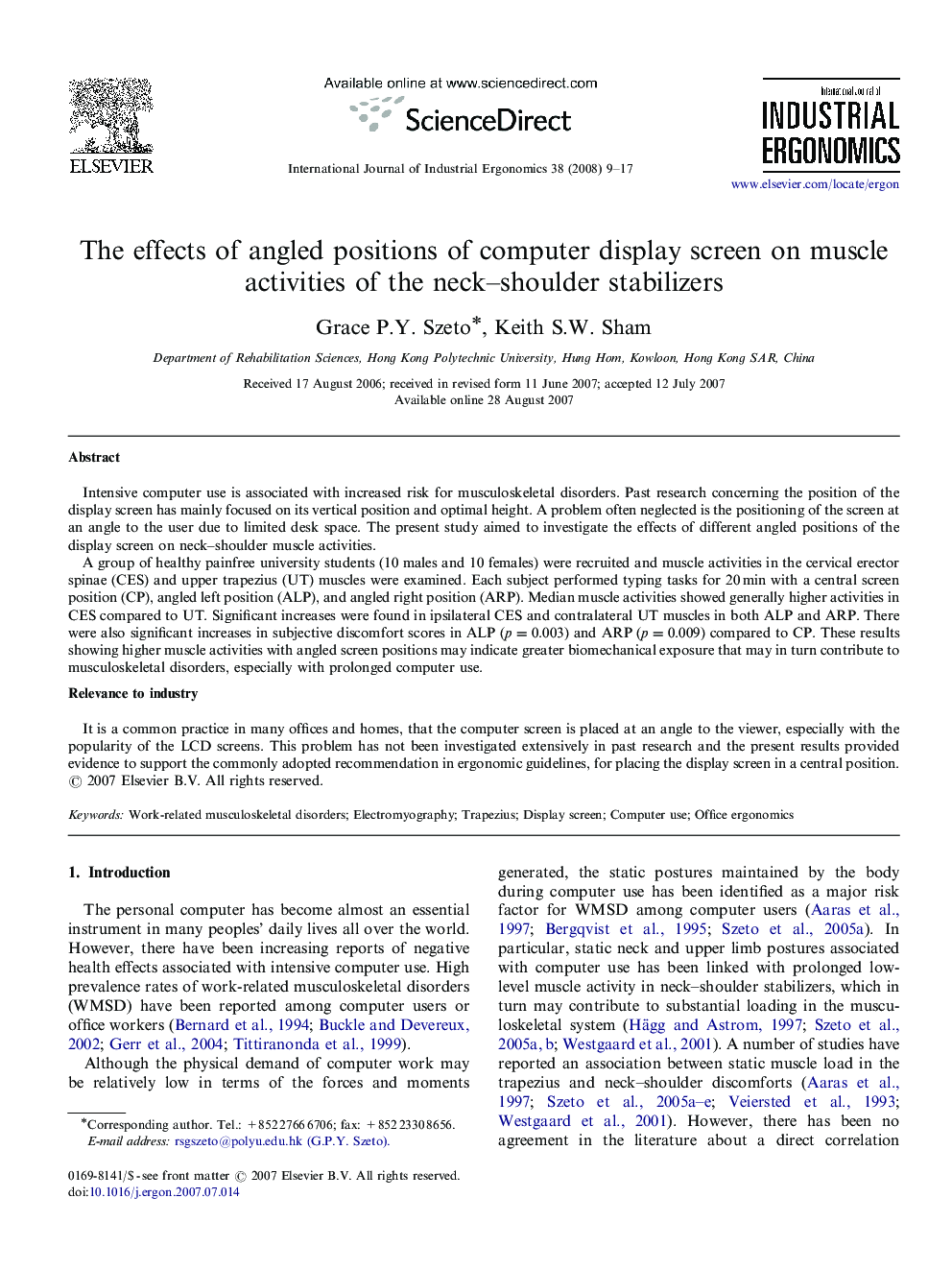| Article ID | Journal | Published Year | Pages | File Type |
|---|---|---|---|---|
| 1096882 | International Journal of Industrial Ergonomics | 2008 | 9 Pages |
Intensive computer use is associated with increased risk for musculoskeletal disorders. Past research concerning the position of the display screen has mainly focused on its vertical position and optimal height. A problem often neglected is the positioning of the screen at an angle to the user due to limited desk space. The present study aimed to investigate the effects of different angled positions of the display screen on neck–shoulder muscle activities.A group of healthy painfree university students (10 males and 10 females) were recruited and muscle activities in the cervical erector spinae (CES) and upper trapezius (UT) muscles were examined. Each subject performed typing tasks for 20 min with a central screen position (CP), angled left position (ALP), and angled right position (ARP). Median muscle activities showed generally higher activities in CES compared to UT. Significant increases were found in ipsilateral CES and contralateral UT muscles in both ALP and ARP. There were also significant increases in subjective discomfort scores in ALP (p=0.003) and ARP (p=0.009) compared to CP. These results showing higher muscle activities with angled screen positions may indicate greater biomechanical exposure that may in turn contribute to musculoskeletal disorders, especially with prolonged computer use.Relevance to industryIt is a common practice in many offices and homes, that the computer screen is placed at an angle to the viewer, especially with the popularity of the LCD screens. This problem has not been investigated extensively in past research and the present results provided evidence to support the commonly adopted recommendation in ergonomic guidelines, for placing the display screen in a central position.
